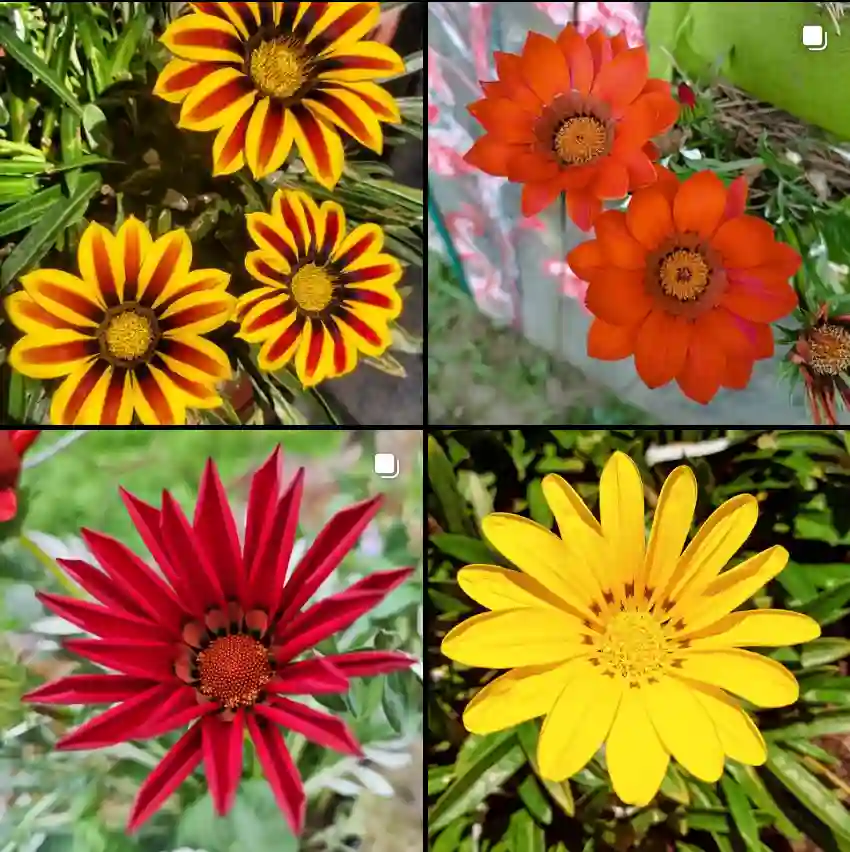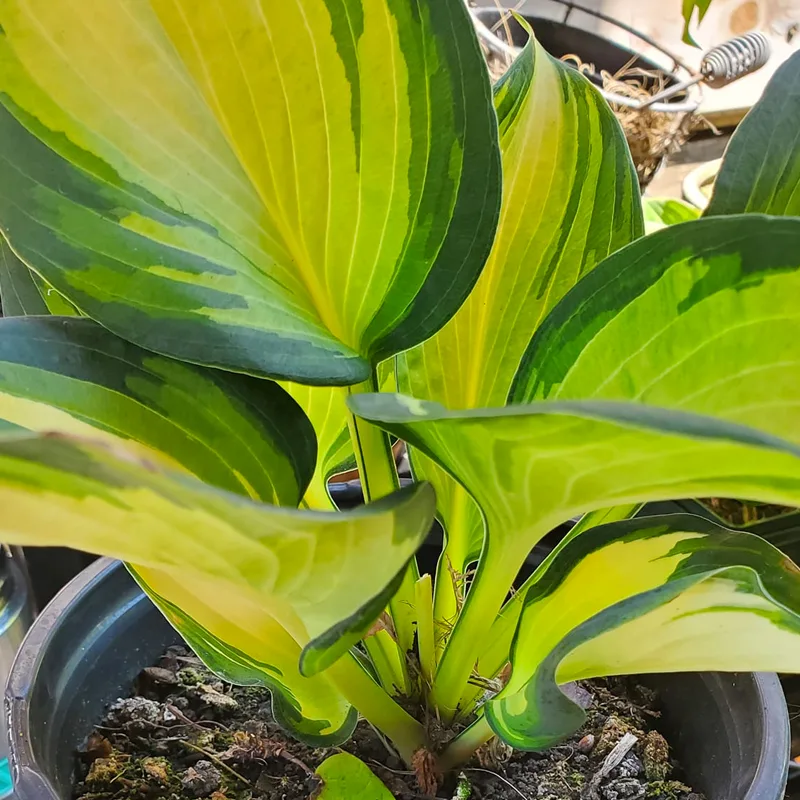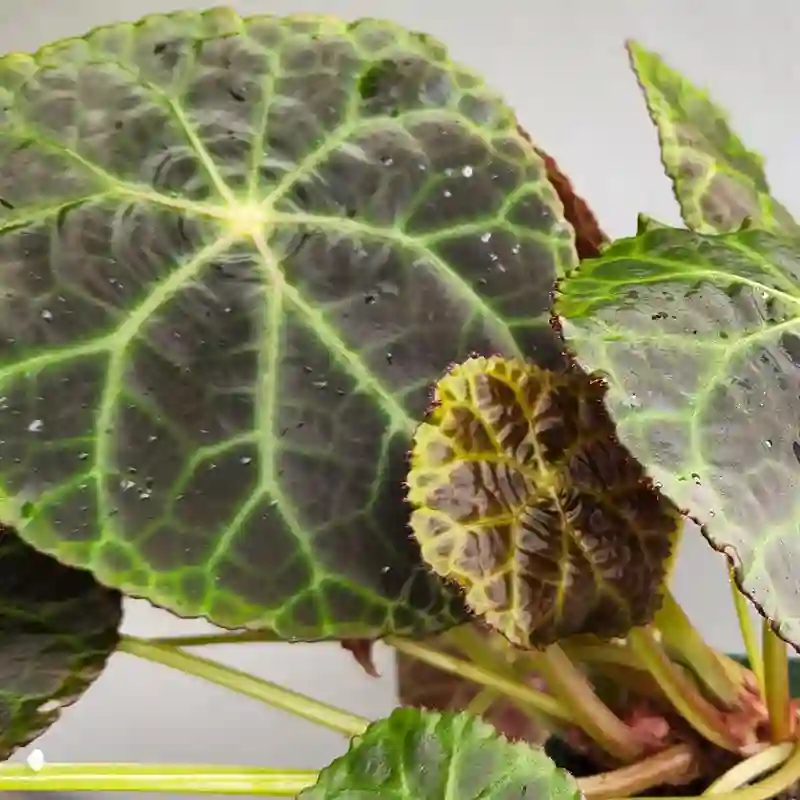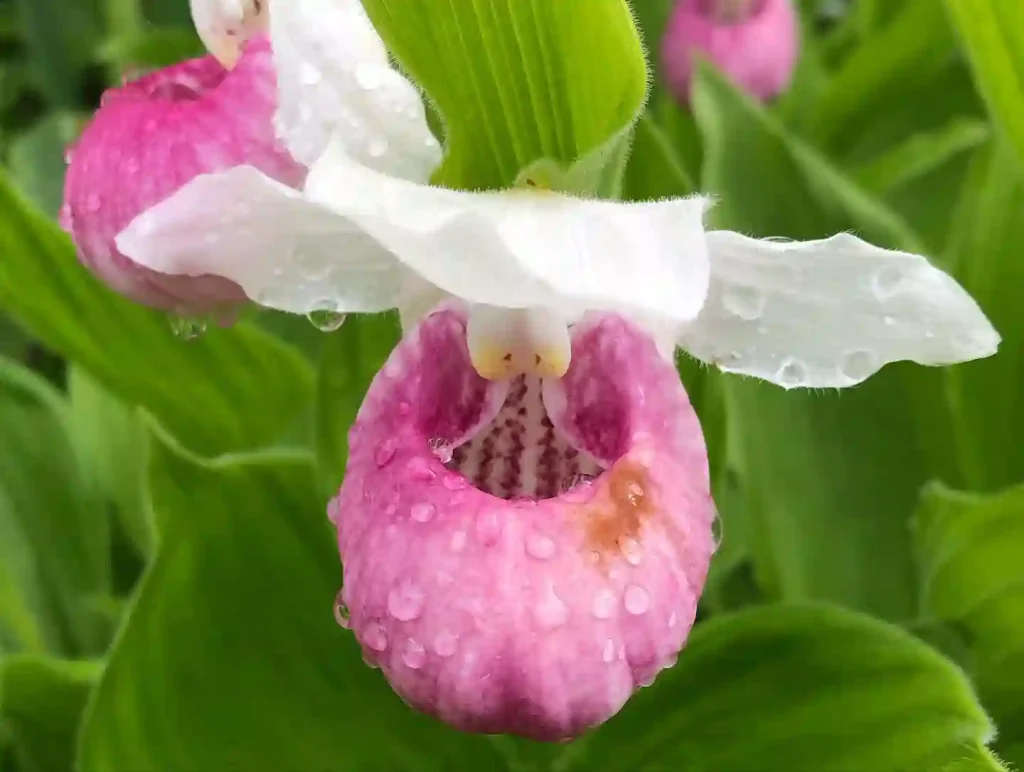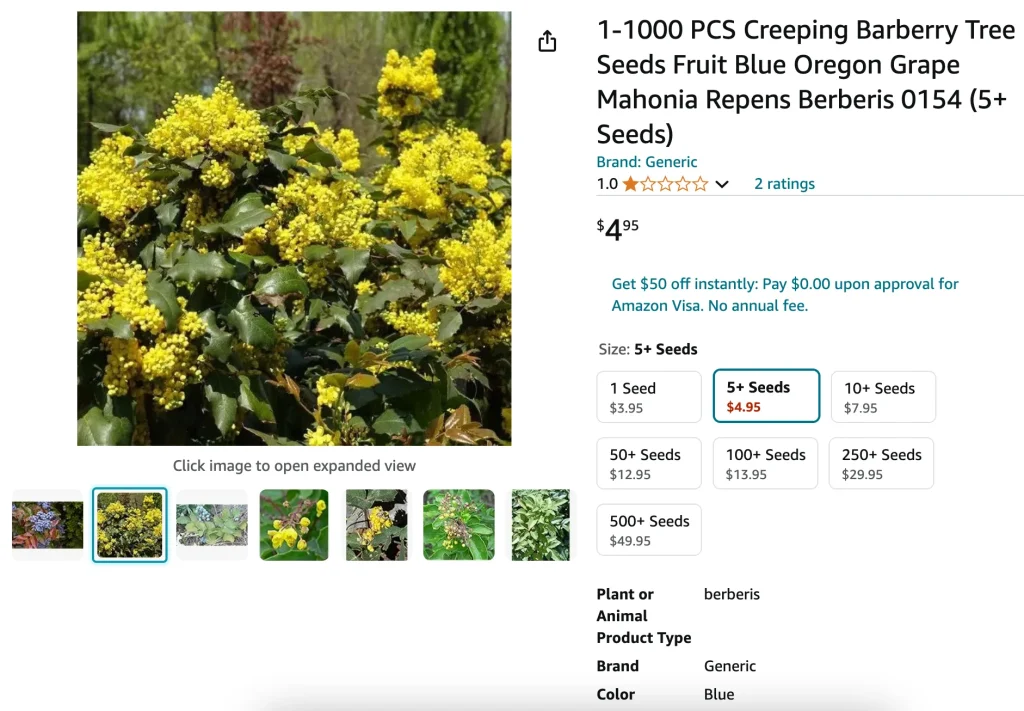
What is Berberis Repens?
Berberis Repens, commonly known as Creeping Barberry, is a low-growing, evergreen shrub. Its dense, spreading habit makes it a great ground cover. The plant features small, holly-like leaves that turn from green to reddish-brown in the fall. It produces yellow flowers in spring, followed by small red berries that attract birds. Berberis Repens is native to North America and is particularly suited to rock gardens, slopes, and as a border plant.
619 Species in Genus Berberis – Barberry
How to Care for Berberis Repens?
Caring for Berberis Repens is fairly straightforward. This plant thrives in well-drained soil and prefers a sunny to partially shaded location. It’s drought-tolerant once established, making it ideal for low-maintenance gardens.
- Watering: Water regularly during the first growing season to help establish the roots. Once established, it’s quite drought-tolerant. During dry spells, water deeply to keep the soil moist but not soggy.
- Soil: Berberis Repens prefers well-drained soil. It can tolerate a range of soil types, including sandy and loamy soils.
- Fertilizing: Feed with a balanced, slow-release fertilizer in early spring. Avoid over-fertilizing, as this can lead to excessive foliage growth at the expense of blooms.
- Pruning: Prune in late winter or early spring to remove any dead or damaged branches. You can also trim it to maintain its shape and promote denser growth.
How to Propagate Berberis Repens?
Propagating Berberis Repens is a rewarding process and can be done through several methods:
- Cuttings: Take semi-hardwood cuttings in late summer or early fall. Dip the cuttings in rooting hormone and plant them in a mixture of peat and perlite. Keep them moist and in a shaded area until they develop roots.
- Division: Divide the plant in early spring or fall. Gently separate the root clumps and replant them in prepared soil.
- Seeds: Collect seeds from the berries in late fall. Stratify them by placing them in the refrigerator for a few weeks before sowing. Plant them in a seed tray and keep the soil moist until germination.
What to Plant with Berberis Repens?
Berberis Repens pairs well with various other plants in the garden:
- Ground Covers: Combine it with other low-growing ground covers like Creeping Jenny or Ajuga for a lush, multi-layered look.
- Ornamental Grasses: Planting it alongside ornamental grasses such as Blue Fescue or Japanese Blood Grass can add texture and contrast.
- Perennials: It works well with perennials like Daylilies, Hostas, or Lavender. The contrast in leaf shape and color can create a visually interesting garden bed.
- Evergreens: Complement it with other evergreen shrubs like Junipers or Boxwoods for a year-round green garden.
Is Berberis Repens Toxic?
Berberis Repens is not considered toxic to humans or pets. However, the berries can be mildly toxic if ingested in large quantities, so it’s best to keep an eye on curious pets and children around the plant.
Benefits of Berberis Repens
- Low Maintenance: Once established, this plant requires minimal care, making it ideal for busy gardeners.
- Erosion Control: Its spreading habit makes it excellent for stabilizing soil on slopes and preventing erosion.
- Wildlife Attraction: The berries attract birds, which can help with natural pest control.
- Aesthetic Appeal: With its year-round foliage and seasonal color changes, it adds beauty to any garden setting.
Common Problems with Berberis Repens
- Pests: Watch out for common pests like aphids or spider mites. Regular inspections and appropriate treatments can manage these issues.
- Diseases: Root rot can occur in poorly drained soils. Ensure proper drainage and avoid overwatering to prevent this problem.
- Winter Damage: In colder climates, the plant may suffer from winter burn. Mulching around the base can help protect the roots.
Compare with Other Similar Plants
Berberis Thunbergii: Unlike Berberis Repens, Berberis Thunbergii (Japanese Barberry) is taller and has more pronounced, spiky thorns. It is also deciduous, shedding its leaves in winter, whereas Berberis Repens is evergreen.
Mahonia: Another plant with holly-like leaves is Mahonia, which is often confused with Berberis Repens. However, Mahonia has larger, more rigid leaves and produces yellow flowers in late winter to early spring.
Cotoneaster: Like Berberis Repens, Cotoneaster also serves as a ground cover. However, Cotoneaster has a more sprawling habit and produces small white to pink flowers.
In conclusion, Berberis Repens is a versatile, low-maintenance plant with several beneficial uses in the garden. Its ease of care, aesthetic appeal, and wildlife benefits make it a valuable addition to many landscapes. Whether you’re looking to cover ground, stabilize soil, or add some evergreen charm, Berberis Repens might just be the perfect choice for your garden.
If i die, water my plants!
